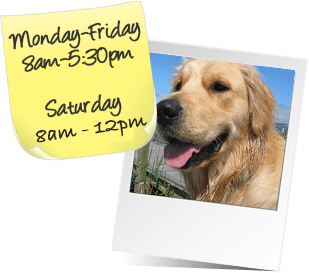January is National Train Your Dog Month! Of course, Fido’s education is important all year long, and not just in January. Did you know that February is also significant for dog training? To continue your education on how to effectively train your dog, check out our article on February Is Dog Training Education Month. Training is really what makes the difference between your pooch being a ‘Good dog’ and being, well, a bit unruly. Here, a vet lists some common dog training mistakes.
Inconsistency
There are many schools of thought when it comes to dog training. You can opt to go with clicker training, or stick to more basic options. Each method has its own pros and cons. However, switching tactics halfway through Fido’s petucation may do more harm than good. Consistency is also important when it comes to teaching vocal commands. Man’s Best Friend is smart, but he won’t understand different ways of saying the same thing. If you say Sit one day and the next day tell your furry pal to Sit down now, you may just confuse your cute pet.
Poor Curriculum
We know, tricks like Shake Paw and Roll Over are super adorable. However, you’ll want to start with the basics, like Sit, Stay, Come, Heel, and Lay Down. Work on these key commands one at a time. Don’t move on until your four-legged student has mastered each one. (It’s worth noting that it’s usually easiest to start with Sit, as it’s so easy for dogs to pick up.)
Long Classes
Our canine pals don’t really have very long attention spans, except of course when they’re watching you cook bacon. Fido may lose interest if his classes are too long. Keep puppy training sessions short and sweet. About 15-20 minutes at a time is good.
Negative Reinforcement
Never punish your furry friend for messing up, or not picking something up quickly enough. Dogs all learn at their own paces. It’s also important to understand that Fido doesn’t really have a good grasp on punishment. He may not know why you’re angry, which can make him anxious. It can also cause him to form a negative association with training. That’s the last thing you want!
Stopping
Training is often more of a journey than a destination. Once your canine buddy has mastered the basics, try working with him in a busy area, like a park. Or, move on to more advanced commands. You may find that Fido really enjoys learning new things!
Our Advice on Dog Training Mistakes in 2024
What are the most effective positive reinforcement techniques for dog training?
Effective positive reinforcement techniques for dog training include using rewards such as treats, praise, and toys to reinforce desired behaviors. Clicker training, where a distinct sound signals correct behavior followed by a reward, is also highly effective. Consistency in rewarding desired behaviors encourages dogs to repeat them. Additionally, shaping, where successive approximations of a desired behavior are rewarded, helps dogs understand complex commands. Timing is crucial, with rewards given immediately after the desired behavior to strengthen the association. These techniques foster a positive learning experience, leading to better obedience and a stronger bond between dog and owner.
How can owners determine their dog’s individual learning style and adapt their training approach accordingly?
Owners can determine their dog’s individual learning style by observing how they respond to different training methods. Some dogs may excel with visual cues and hand signals, indicating a preference for a more visual learning style. Others may respond better to verbal commands, suggesting an auditory learning preference. Additionally, dogs may exhibit a preference for tactile stimulation, responding well to hands-on training techniques. By paying attention to their dog’s reactions and progress during training sessions, owners can tailor their approach to accommodate their pet’s preferred learning style, ensuring a more effective and enjoyable training experience for both dog and owner.
What are some common signs that a dog is becoming frustrated or overwhelmed during training?
Common signs that a dog is becoming frustrated or overwhelmed during training include excessive panting, yawning, or drooling, which can indicate stress. The dog may also exhibit avoidance behaviors such as turning away, sniffing the ground, or attempting to leave the training area. Whining, barking, or growling may occur as vocal expressions of frustration. Additionally, the dog may display repetitive behaviors like pacing or scratching, indicating discomfort or confusion. By recognizing these signs, owners can adjust their training approach to alleviate stress and ensure a positive learning experience for their canine companion.
How can owners set realistic goals for their dog’s training progress?
Owners can set realistic goals for their dog’s training progress by breaking down desired behaviors into smaller, achievable steps. Start with basic commands like sit, stay, and come, gradually increasing difficulty as the dog masters each skill. Set specific, measurable goals with a clear timeline for accomplishment. Regular assessment of the dog’s progress allows for adjustments to the training plan as needed. It’s essential to consider the dog’s individual temperament, learning style, and any potential challenges they may face. Celebrate small successes along the way to maintain motivation and reinforce positive behavior.
What role does socialization play in a dog’s overall training and behavior, and how can owners ensure their dog is properly socialized?
Socialization plays a crucial role in a dog’s overall training and behavior, helping them develop confidence, adaptability, and appropriate social skills. Owners can ensure their dog is properly socialized by exposing them to various environments, people, animals, and situations from a young age. Positive interactions and experiences during these exposures help the dog feel comfortable and secure in diverse settings. Enrolling in puppy classes, visiting dog parks, and arranging playdates with other well-behaved dogs are effective ways to facilitate socialization. Consistent training, reinforcement of good behavior, and monitoring of interactions ensure a well-adjusted and socially adept canine companion.
Please call us, your local vet clinic in Hobe Sound, FL, for all of your pup’s veterinary care needs, including our specialized Veterinary Wellness & Pet Vaccinations services. We’re always happy to help!




